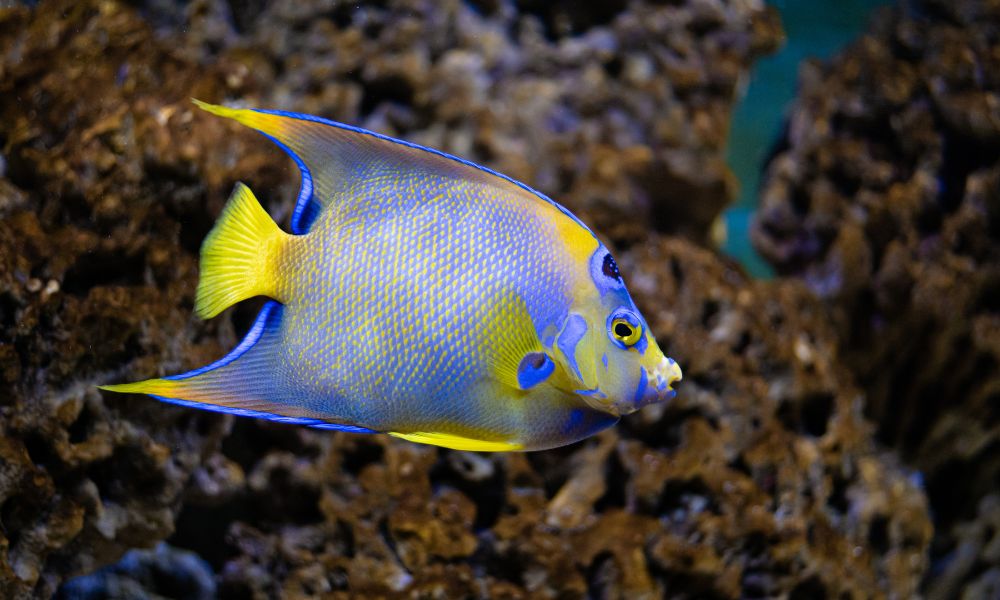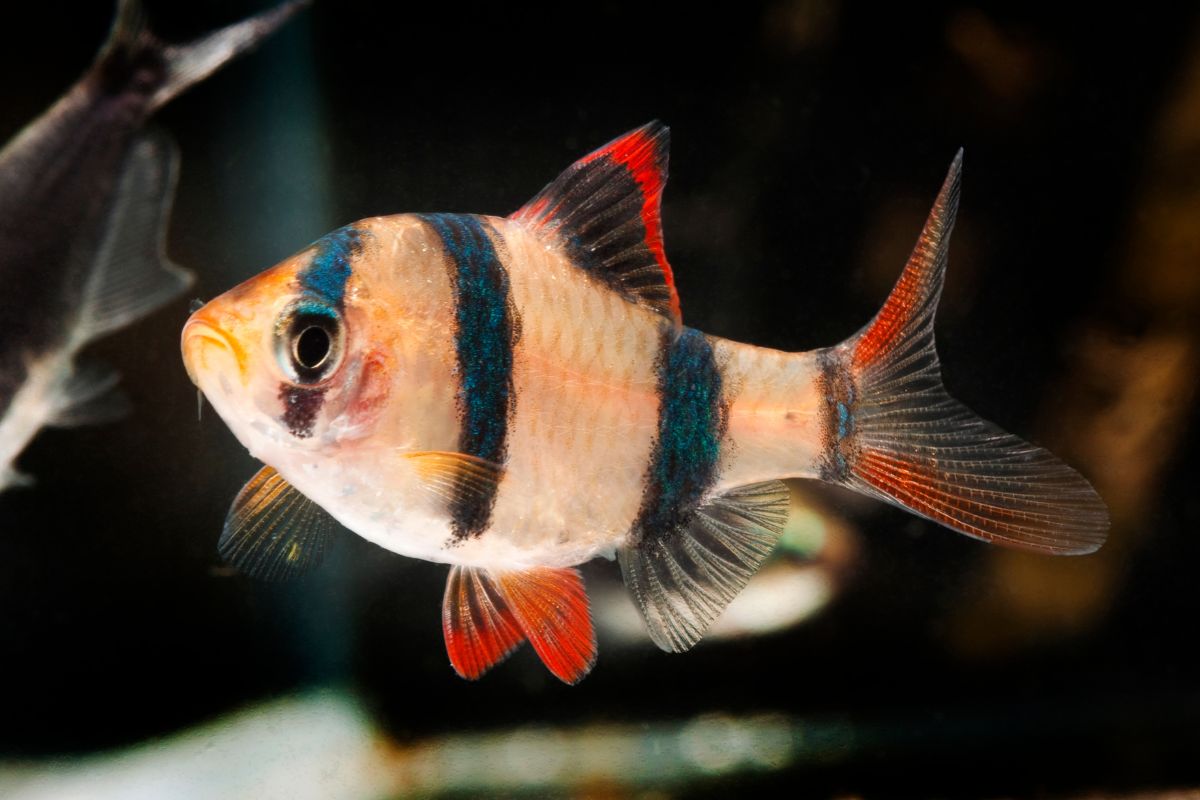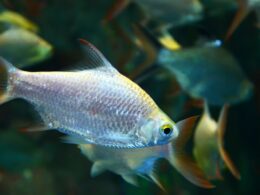In this article Show
As an avid fish keeper, I’ve learned that the harmony of a home aquarium depends significantly on choosing the right mix of fish. Today, we’re focusing on a common query among enthusiasts: can tiger barbs and angelfish share the same tank peacefully?
Tiger barbs and angelfish are popular choices for home aquariums, each admired for their distinct appearance and behavior. Tiger barbs, known for their vibrant colors and active nature, can bring energy to any tank. In contrast, angelfish, with their elegant fins and serene demeanor, add a touch of grace.
Understanding the compatibility of these two species is crucial for maintaining a healthy and stress-free environment for them. In this article, we’ll explore the key considerations of housing tiger barbs with angelfish, focusing on their habitat requirements, social behaviors, and care needs.
Can Tiger Barbs Live With Angelfish?
Yes, tiger barbs can live with angelfish, but with careful consideration and specific conditions. When combining these two popular aquarium species, it’s essential to focus on tank size, water parameters, and the temperament of individual fish. Tiger barbs, known for their playful yet sometimes nippy nature, require a spacious environment to coexist peacefully with the more serene and elegant angelfish.

Factors Influencing Compatibility
Water Parameters (pH, Temperature, Hardness)
The key to a thriving aquarium lies in maintaining the right water parameters. Tiger barbs and angelfish require different, yet somewhat overlapping, conditions. Tiger barbs thrive in slightly acidic to neutral water (pH 6.0-7.0), with a temperature range of 75-80°F (24-27°C), and moderate hardness.
Angelfish prefer a pH between 6.5 and 7.5, with similar temperature needs but can tolerate a wider range of water hardness. Consistently monitoring and adjusting these parameters is crucial for their health and wellbeing.
Tank Size and Environment Setup
Space is paramount. A tank that’s too small can lead to stress and aggression. A minimum of 30 gallons is recommended for these species to coexist, with more space being better.
The environment within the tank should include plenty of plants and hiding places to reduce stress and provide refuge, especially important for angelfish who are more prone to stress in a shared habitat.
Fish Temperament and Social Behavior
Understanding and managing the social dynamics between tiger barbs and angelfish is vital. Tiger barbs are active and can be fin nippers, especially if kept in small groups. To minimize this, keep them in a group of six or more, which tends to dilute their aggression.
Angelfish, on the other hand, are generally peaceful but can become territorial, especially during breeding. Observing their interactions and ensuring each fish has enough space will help in maintaining a peaceful community aquarium.
The Challenges of Housing Tiger Barbs with Angelfish
Behavioral Differences and Potential Conflicts
The primary challenge in housing tiger barbs and angelfish together stems from their differing behaviors. Tiger barbs are known for their energetic and sometimes aggressive nature, often nipping fins, which can stress the more tranquil and slow-moving angelfish.
This disparity can lead to conflicts, especially in smaller or poorly arranged tanks where angelfish cannot escape the barbs’ attention.

Specific Needs of Each Species
Catering to the specific needs of both tiger barbs and angelfish in a shared tank is a delicate balance. Tiger barbs are schooling fish and require the company of their kind to feel secure and display natural behaviors.
In contrast, angelfish need a more serene environment with ample vertical space to accommodate their tall bodies and long fins. Balancing these needs in terms of tank design and population can be challenging.
Alternatives to Tiger Barbs and Angelfish Pairing
For Tiger Barbs
- Danios: They share a similar level of activity and water parameter requirements with tiger barbs.
- Corydoras Catfish: Peaceful bottom dwellers that can coexist with the active nature of tiger barbs.
- Gouramis: Their larger size and calm demeanor can balance the energy of tiger barbs.
For Angelfish
- Dwarf Cichlids: These fish share similar water conditions and are generally peaceful, making them good companions for angelfish.
- Mollies: Known for their peaceful nature, mollies can coexist well with angelfish.
- Tetras: Especially larger tetras, which are less likely to be bullied by angelfish.
Choosing the right tank mates for either tiger barbs or angelfish depends on the individual temperament of the fish, tank size, and the aquarist’s ability to maintain a balanced environment. Proper research and understanding of each species’ needs are essential for a harmonious aquarium.









